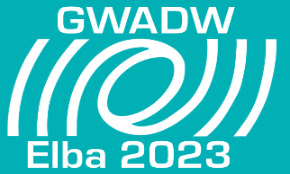Speaker
Description
We present further progress on our six-degree-of-freedom (6D) inertial sensor. Our purpose is to improve on the low-frequency seismic noise sensing of the current aLIGO detectors with a device that is capable of simultaneously reading out all six degrees of freedom and decoupling the troublesome cross couplings, such as tilt-longitude that affect commercial seismometers. We have reached the final phase of testing for the metal prototype and are ready to begin commissioning of the more compact fused silica version (C-6D), which has been designed with direct LIGO application in mind. Aside from the usual content on the functionality of 6D, we would like to highlight our recent investigation into the semi-classical gravity model of the Schroedinger-Newton equation, as this application is less familiar to the low-frequency community, and showcases the 6D device’s performance in an experimental role. We couple our sensor with a high-finesse (300,000) optical cavity to enhance the quantum interaction. We present a three-part summary of our progress: (a) the final results of the metal 6D testing, (b) results of a novel application of the 6D sensor towards fundamental physics research – testing the Schroedinger-Newton equation, (c) commissioning update on C-6D.

